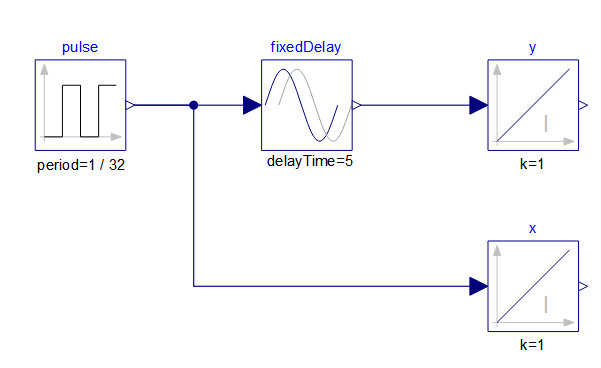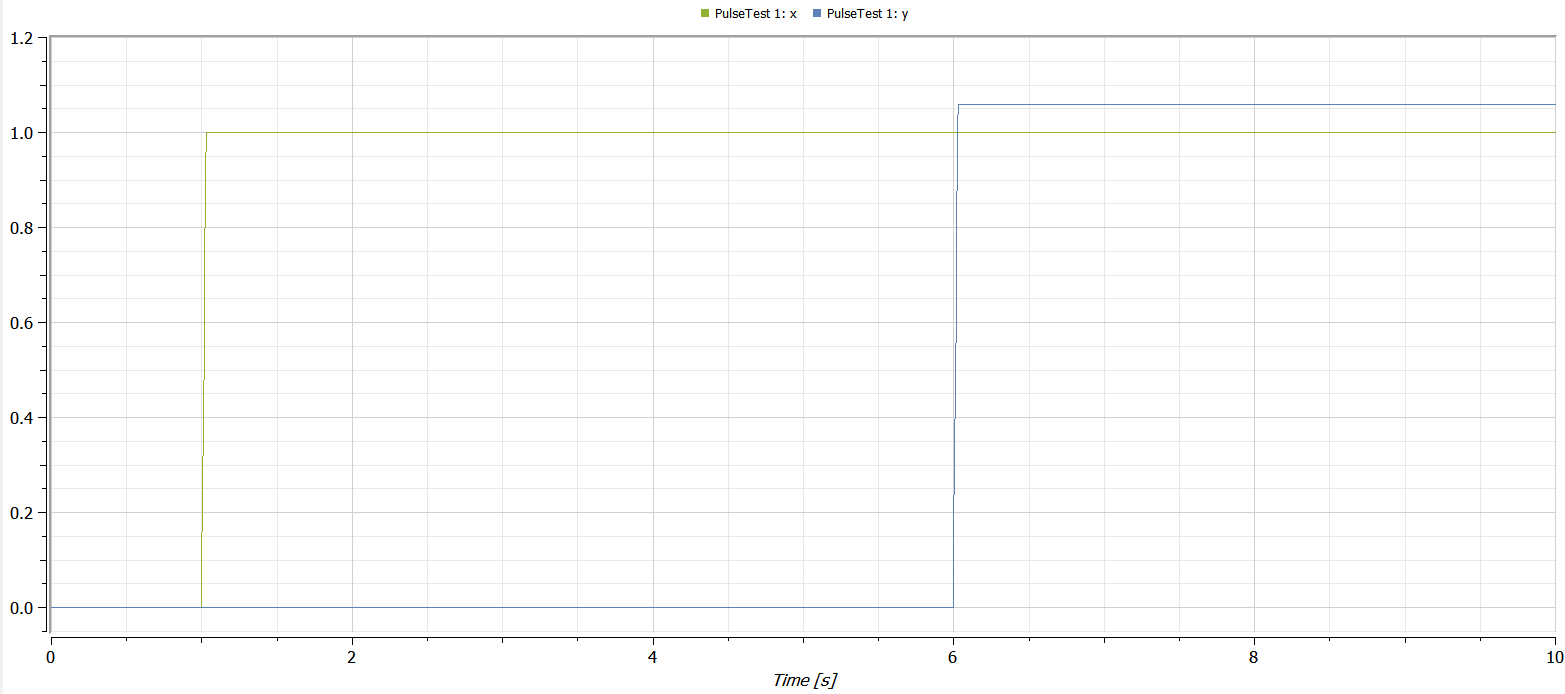I noted numerical issues integrating a pulse input that is delayed by a fixed amount of time in Modelica (using Wolfram System Modeler 4.3):
model PulseTest "Test FixedDelay with Pulse Input";
Modelica.Blocks.Sources.Pulse pulse(
startTime = 1,
width = 100,
period = 1/32,
amplitude = 32,
nperiod = 1
);
Modelica.Blocks.Nonlinear.FixedDelay fixedDelay( delayTime = 5 );
Modelica.Blocks.Continuous.Integrator x; // integrator for the undelayed pulse
Modelica.Blocks.Continuous.Integrator y; // integrator for the delayed pulse
equation
connect( pulse.y, fixedDelay.u );
connect( fixedDelay.y, y.u );
connect( pulse.y, x.u );
end PulseTest;
Integrating a pulse with period = 1/a, amplitude = a, and width = 100 % should give 1.0. But as can be seen from the plot, this is not what I get for the delayed pulse:
Only the undelayed signal gives the correct value using DASSL. The numerical integration error will appear already for period = 1/a = 1/8 and (naturally) grow as a grows.
What is the best remedy?



eventat the appropriate times to ensure that it didn't spread out the signal. My first thoughts with your problem was to use a when statement in a fancy way and essentially create your own delay model. We'll see if someone else responds with good solution in the meantime. – Playwright